By Isis Calderon
Taiwan recognizes 16 indigenous tribes, each with its own distinct culture, language, and traditions. These groups represent the island's earliest inhabitants, with a combined population exceeding 560,000, accounting for about 2.38% of the national population. Their cultures are a pivotal aspect of Taiwan's social fabric, offering diverse perspectives on its history and contemporary societal development. Indigenous languages in Taiwan are crucial to the cultural identity and heritage of these tribes, with many facing challenges of preservation and revitalization. The government's efforts, alongside community initiatives, aim to safeguard these languages and cultural practices, demonstrating a commitment to maintaining Taiwan's rich indigenous heritage. The recognition and integration of indigenous rights, culture, and education have become central to Taiwan's approach to celebrating and preserving its multicultural identity.
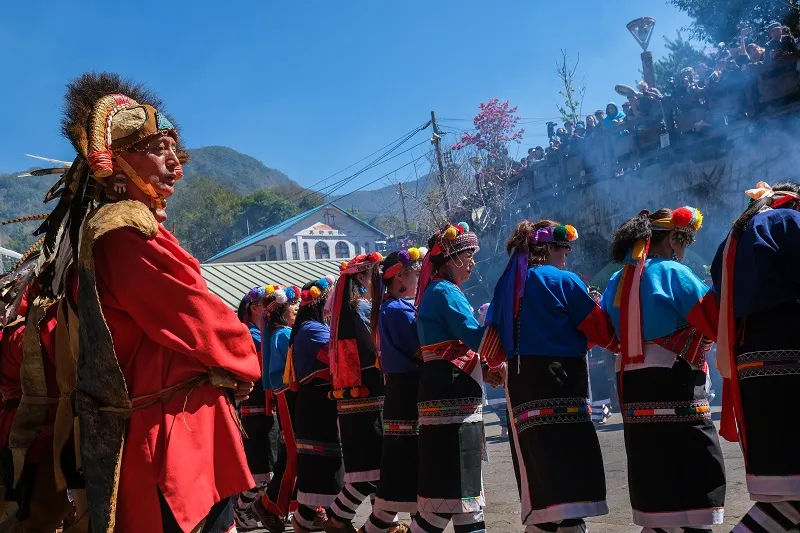
▲Tsou people of Taiwan gathered while performing a ceremony. Women occupy the inner circle, while men occupy the outer circle, as a form of protection towards women. Photo: Isis Calderon
The history of Taiwan's indigenous peoples is marked by resilience in the face of external pressures and colonization. Initial peaceful coexistence with nature and subsequent trade relations were disrupted by colonization, first by the Dutch and later by the Japanese, affecting indigenous lands and cultures. Post-Japanese occupation, Taiwan's indigenous communities continued to face challenges, including assimilation policies and cultural marginalization. However, the late 20th and early 21st centuries saw a paradigm shift, with growing recognition of indigenous rights and cultural revitalization. Legislation now recognizes indigenous languages as national languages, and there's increased support for cultural preservation, such as language and history courses in the national curriculum. These developments reflect a broader acknowledgment of the indigenous peoples' integral role in Taiwan's history and their contributions to its cultural diversity.
In today’s article we’ll have a closer look at a specific group: the Tsou peoples of Taiwan.
The Tsou, an indigenous group of central southern Taiwan, represent a vibrant Austronesian culture deeply rooted in the region's history. With an estimated population of around 6,000 individuals, they constitute approximately 1.19% of Taiwan's indigenous population, predominantly residing in Chiayi and Nantou Counties. The Tsou's ancestral connections to the Alishan area have shaped their identity and traditions over generations. Historically, the Tsou people have maintained rich oral histories, recounting migrations and the establishment of multi-clan settlements. These narratives highlight their enduring connection to the land and the formation of cohesive communities. The earliest written records of the Tsou date back to the Dutch occupation, providing insights into their social organization and cultural practices.
They engage in traditional agriculture, cultivating millet and taro, which are staples in their diet and significant in their rituals. Hunting, once a vital part of their subsistence lifestyle, remains a ceremonial practice, reflecting their deep respect for the environment. Tsou music is renowned for its complexity, with polyphonic singing being a distinct cultural hallmark. Their traditional attire, often made from materials sourced from the environment, is worn during important ceremonies and festivals. Their traditional attire includes leather garments for men and cotton, silk, or brocade clothing for women. These garments are adorned with symbolic elements, such as feathers and decorative bands, reflecting values of courage, vitality, and social status within Tsou society.
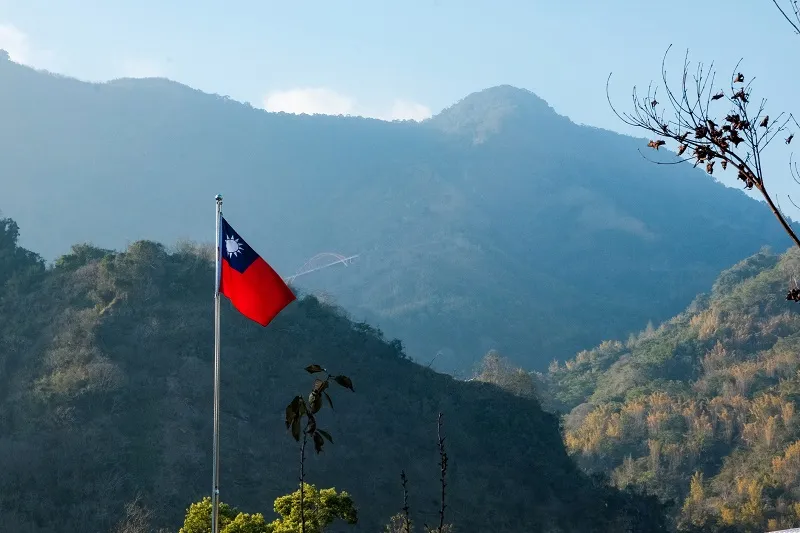
▲ A Taiwanese flag waving, with the Alishan mountains in the backdrop. The Tsou peoples have ancestral connections to the Alishan area. Photo: Isis Calderon
The Tsou people's cultural heritage encompasses clothing, language, music, and spiritual beliefs. As custodians of their ancestral lands, the Tsou continue to uphold their traditions while embracing opportunities for cultural revitalization and community development in the modern era.
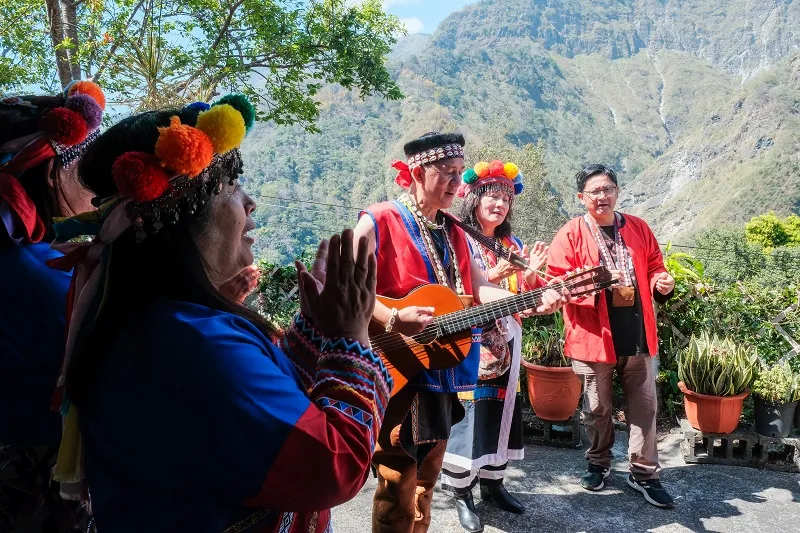
▲ A group of the Tsou tribe gathers together to sing at lunchtime. Singing is a fundamental aspect of the Tsou, usually performing at meal times when receiving special guests, or during ceremonies.
The festivities of the Tsou people, particularly the Mayasvi Festival,or Coming-of-Age Ceremony, are deeply rooted in their cultural heritage and social cohesion. As one of the three major festivals of the Tsou indigenous tribe, Mayasvi reflects the historical bonds among the various Tsou clans, emphasizing tribal solidarity and the preservation of traditional customs. This rite of passage marks the transition of Tsou youth into adulthood and is a time for cultural preservation and identity reaffirmation. The ceremony involves traditional rituals, teachings from elders, and participation in community activities to instill values of responsibility, respect, and unity among the younger generation.
Central to the festival is the kuba, serving as the primary gathering place and spiritual center for the tribe's men. Divided into four stages, the Mayasvi Festival begins with intricate preparations, including the arrangement of sacred objects and the rethatching of the kuba's roof to signify prosperity and successful hunts.
During the main ceremony, participants engage in rituals to welcome the gods, such as carrying torches and making offerings of livestock. The ceremonial cutting of branches from sacred Yono trees symbolizes the descent of the God of War, underscoring the tribe's spiritual connection.
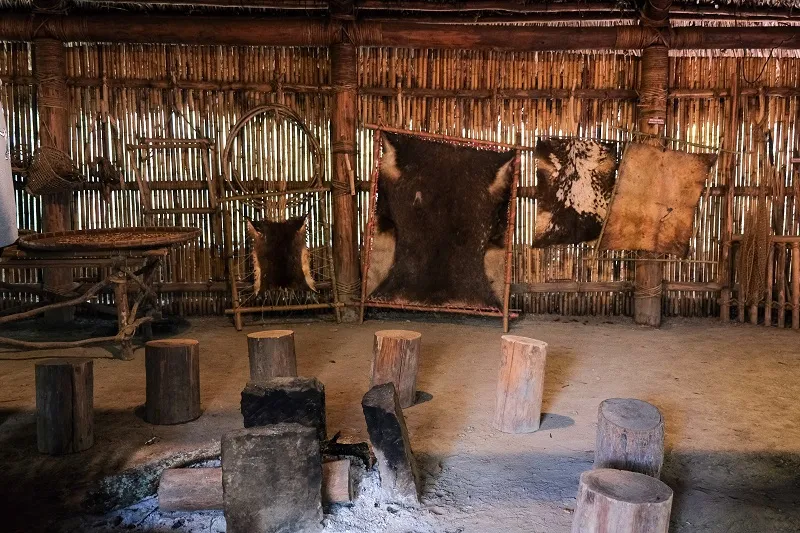
▲ A variety of animal skins being stretched and processed to make clothing, demonstrating the Tsou people's expertise in hunting. Photo: Isis Calderon.
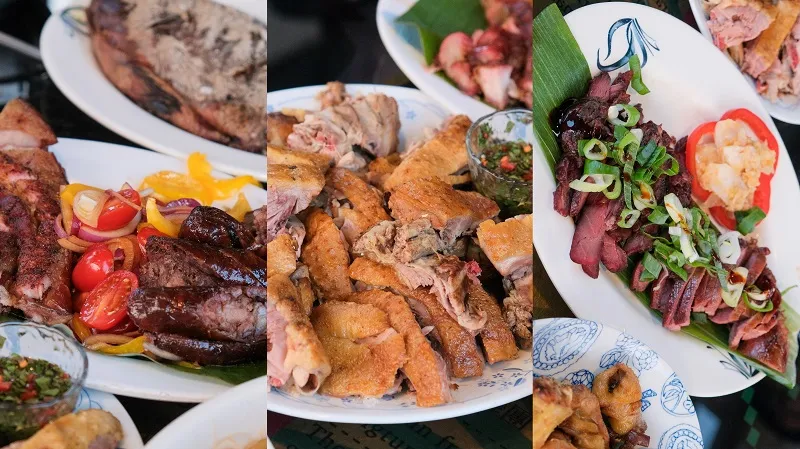
▲ A glance into Tsou people’s gastronomy. Photo: Isis Calderon
Following this, the singing and dancing celebration unfolds, with all members of the tribe joining in praise of the God of War and the retelling of ancestral heroism. The festival culminates with a final ceremony, led by the chief, featuring traditional songs and the extinguishing of the central bonfire, marking the festival's conclusion before midnight. Through these rituals and ceremonies, the Mayasvi Festival is an example of the Tsou people's enduring cultural resilience and commitment to preserving their heritage amidst societal changes, and sometimes even system exclusion, in Taiwan.
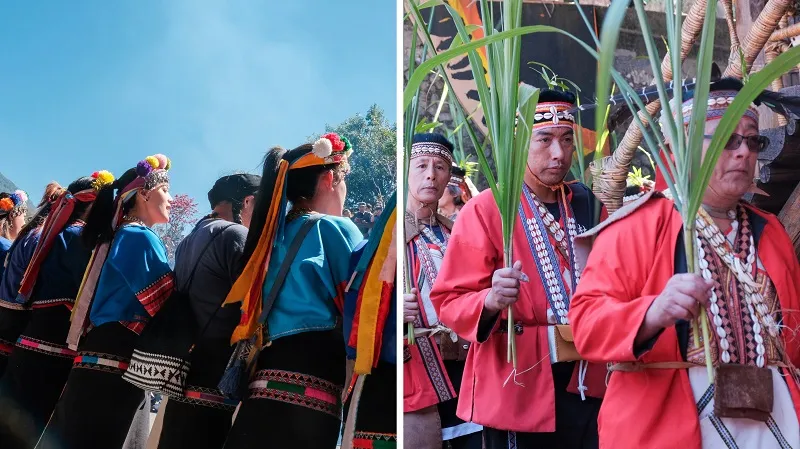
▲ A closer look at the traditional attire of women and men of the Tsou tribe. Photo: Isis Calderon
Exploring Taiwan's diverse aboriginal groups leads to understanding the nuanced cultural richness of the island, and it also sheds light on the intricate dynamics of identity and politics in contemporary Taiwan. These indigenous communities, with their distinct traditions and festivals, offer a lens through which one can understand the complex dynamics of Taiwanese society.
For foreign students, immersing themselves in the traditions and languages of these indigenous peoples provides a unique opportunity to delve deeper into Taiwan's multifaceted identity. Moreover, understanding the political implications of indigenous rights and representation adds a layer of depth to the exploration of Taiwan as a country.
Institutions like NCCU are at the forefront of integrating indigenous knowledge into academic curricula, emphasizing the importance of preserving and honoring Taiwan's indigenous heritage. Through initiatives like the Indigenous Peoples Language Learning Center, The International Program on Austronesian Studies and collaborative efforts in film and heritage preservation, NCCU actively promotes awareness and appreciation of indigenous cultures.
Engaging with these programs broadens our perspectives and contributes to the ongoing dialogue surrounding indigenous rights and cultural preservation. Embracing Taiwan's indigenous cultures is a meaningful journey towards fostering empathy, understanding, and solidarity within Taiwanese society and beyond.
Thank you for reading!
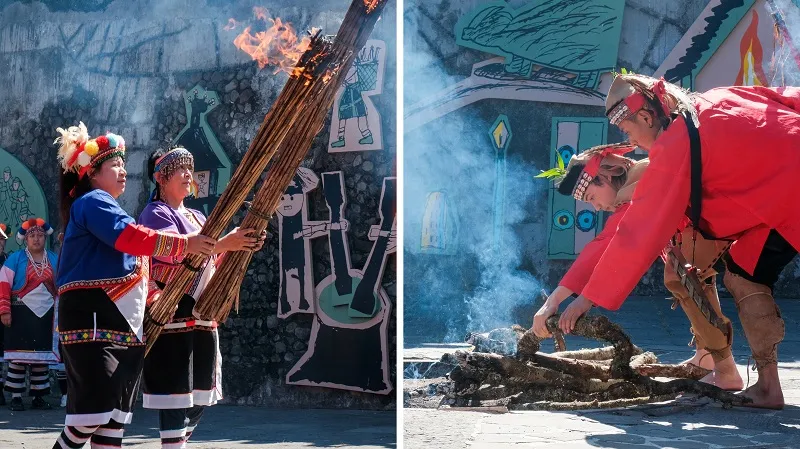
▲ A group of women and men carry torches to start the Mayasvi celebration. Photo: Isis Calderon
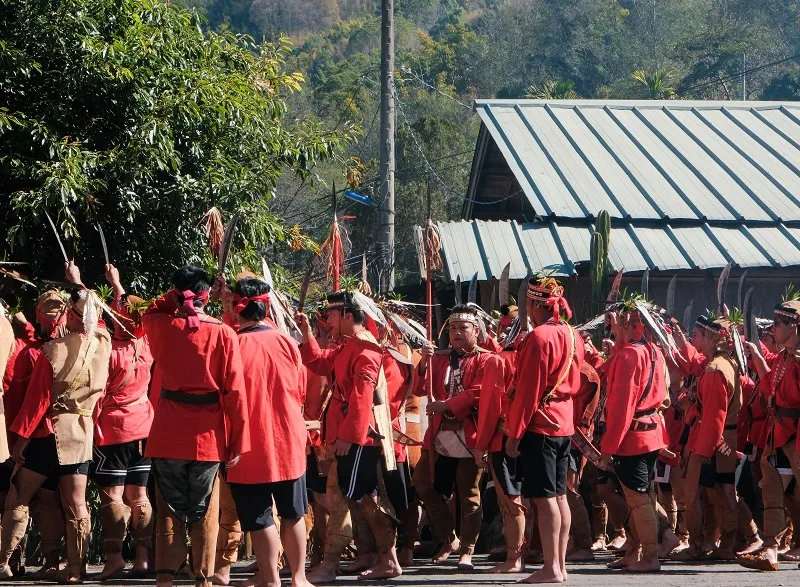
▲ The men of the Tsou tribe gather to cut the branches of the sacred Yono tree, a special step during the Mayasvi ceremony. Photo: Isis Calderon
More on OIC connect no.94:
Taiwan, English and the World: The First Edition of NCCU’s English Diner
Wang Gong Pastoral Patrolling of the Fields: a Look Into Local Religion in Muzha
Hearing from members of the NCCU Host Family Program
Warming Board game night at I-House hosted by IA NCCU
From Campus to Career: Navigating Futures at NCCU's Career Fair
From Campus to Career: Exploring the Working Market in Taiwan for International Students